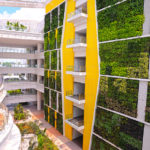Having in mind the fact that 1 in 10 people in the world lacks access to safe water, it’s no wonder that this so-called water crisis is a number one global risk based on the impact on society. Of course, it’s a more common problem in the developing countries but actually, everyone’s affected. That’s why inventors and engineers are trying so hard to find efficient yet affordable solutions for purifying water. Here are some of the cost-efficient solutions you can use in your own home.
Trusting carbon
Activated carbon or charcoal is treated with oxygen to open up a bunch of pores between the carbon atoms increasing the surface of the carbon and allowing it to absorb many chemicals and particles. In short, that’s how carbon filters work. It’s a process called adsorption and it’s effective for removing sediments, VOCs, taste and odor from water. Once the pores are full, the filters need to be replaced since filtering will stop. It’s quite environmentally-friendly and cost-efficient, not to mention the low maintenance it entails.
Using solar energy
The oldest solution for bacteria-free water is to boil it over the fire but you can do the same by using solar energy. By simply leaving the bottle of water in the sun long enough, you’ll get the same effect. UV radiation will kill the microbes and your water will be safe to drink. In other versions, dirt and contaminants are eliminated through the process of evaporation. This method was presented after the big earthquake in Haiti in 2010 but now you can even purchase a device carefully designed for this solution.
Relying on the UV radiation
Since not everyone has the option to use solar energy on a daily basis, engineers have come up with a UV filter for disinfecting the water in your home. It works with strong lamps that produce UV rays. A UV water filter with sterilizer is easy to maintain and doesn’t produce harmful chemicals. Not a single microbe can survive the UV radiation so you’ll be sure you’re protected. Another advantage to this method is that it won’t change the taste of your water, unlike some chemicals – chlorine for instance. Simply put a UV filter under your sink and don’t worry about it – until the next annual service.
Going with ceramic
In 2008, Cambodia was provided with ceramic water filters. Because of that, UNICEF was awarded by the International Water Association. Those filters are made of clay mixed with combustible materials, such as rice husks or sawdust. After that, the filters are shaped to look like flowerpots and fired in a kiln. Combustible material burns in this process, leaving tiny pores in ceramics which serve as a water filtration system. It’s a quite simple system but it removes most of the bacteria from the water. Cambodia, for example, has reduced diarrheal illnesses by 50 percent since they got the ceramic filters.
Disinfecting water with chlorine
Chlorine is widely used in pool sanitation as well as for disinfecting the tap water. In a process called water chlorination, chlorine or hypochlorite is added to the water. It can prevent waterborne diseases so you can thank chlorine for not having cholera, dysentery, or typhoid. Chlorine is a strong oxidizing agent so it kills the microbes via the oxidation. It’s usually used in community water supply so the water is already clean before it comes to your household.
Safe water is a major problem all over the world, but nowadays there are so many cheap solutions for every home. Try some of these methods and see what works best for your household – either one will provide you with the drinks of all drinks – pure water.







